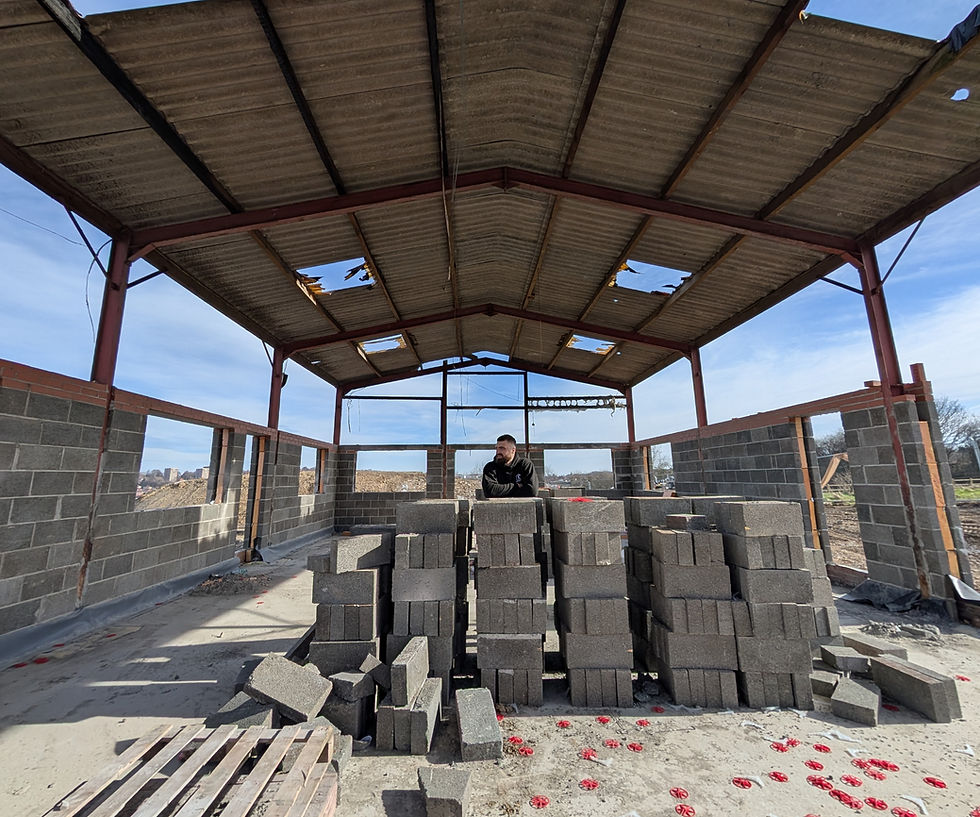Why Bigger Projects Mean Bigger Margins
- PropInvest Co.

- May 27
- 3 min read

When it comes to property development, the assumption that “bigger means riskier” is common, but often short-sighted. At PropInvest, we’ve found that scaling up to larger projects hasn’t just increased our ambition. It’s significantly improved our returns, efficiency, and investor outcomes.
In this blog, we’re breaking down why bigger developments deliver bigger margins, and how the shift from flips and refurbs to large-scale conversions has transformed our business.
1. Economies of Scale: More Units, Smarter Spend
In smaller refurb projects, your overheads - legals, surveys, architects, planning fees - stay relatively fixed, no matter the profit margin. Whether you’re building two flats or twenty, you still need drawings, engineers, conveyancing, and insurances. That’s a lot of upfront cost to spread over very little return.
But on larger projects, every extra unit dilutes that cost.
For example:
Planning fees don’t increase proportionally with the scale of the site.
Professional fees for architects, QS, and engineers often remain flat-rate or slightly scaled.
Build materials can be bought in bulk, significantly reducing cost-per-unit.
The result? The margin per unit increases the more you scale.
2. Better Contractor Pricing
Larger projects attract higher-calibre contractors — and more consistent pricing.
With a 6-month conversion or 12-month new-build scheme, you become a preferred client. You’re not a one-off job. You’re a pipeline. And contractors price accordingly.
We’re able to:
Negotiate favourable day rates or package deals
Develop trust and accountability with teams we reuse again and again
Minimise the “start-up friction” of onboarding new teams for every small job
This repeat relationship model improves build quality, timelines, and budget control, which means more dependable profits.
3. Planning Uplift = Built-In Value
One of the biggest advantages of larger developments is the potential for planning gain.
Whether you’re securing a change of use, increasing unit count, or adding square footage, the ability to add value at paper-stage is often significantly greater on larger sites.
Smaller projects might only yield limited uplift. But with larger buildings, even modest changes to layout or usage can unlock six-figure increases to GDV — before a single brick is laid.
This creates a strong buffer for investors, reduces reliance on end-market fluctuations, and gives us more control over the value journey.
4. Investor Confidence & Efficiency
High-net-worth investors are often more comfortable with bigger projects — once the model is clear and risk-managed.
Why?
Because they understand that:
Bigger projects = more predictable cash flow
Professional teams and systems are in place
There’s room to absorb minor overruns without wiping out returns
We now spend less time explaining ten £100k projects to ten different investors — and more time building long-term partnerships around fewer, higher-value deals.
That means:
Less admin
More strategic conversations
More aligned goals
5. The Real ROI Isn’t Just Money
Bigger deals don’t just pay better — they allow us to work smarter, not harder.
Instead of spinning ten small plates, we’re focused, structured, and scalable. We’ve systemised investor reporting, streamlined project management, and built out internal processes that give our partners clarity and confidence.
This isn't about ego or size for size’s sake. It’s about creating real, repeatable value — and running a business that performs as well off-site as it does on it.
Scaling with Intention
Scaling into larger developments isn’t the right move for every team.
But for us — and our investor partners — it’s been the smartest decision we’ve made.
✅ Bigger margins
✅ Stronger systems
✅ Deeper trust
✅ Higher returns
It’s not about doing more. It’s about doing better — and creating the kind of impact that smaller deals simply can’t.
👇 Want to find out how we structure our larger projects with investor protection in mind?
Get in touch — and we’ll walk you through a live example from planning to profit.




Comments